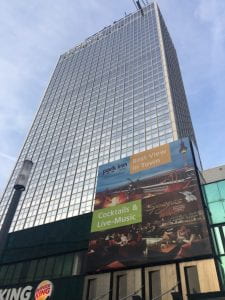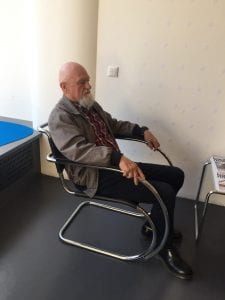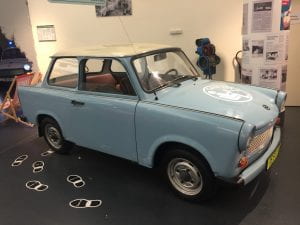Emmy Sale, MA History of Design and Material Culture, explains her Student Recruitment and Outreach role.
Throughout my BA and MA degrees I have worked as a Student Recruitment and Outreach (SRO) ambassador. The role has provided me with the opportunity to work at a range of events organised by the Widening Participation (WP) and Outreach teams in the university but also to gain valuable and transferable skills alongside my studies.
One of the first sessions involved creating and planning a student-led taster lesson as form part of City Campus visits aimed at Year 9 students. The aim is to introduce students to subjects that can be studied at university as well as the ways in which they are taught. The taster I created was based on my favourite aspects of my studies, that is, object-based analysis and theories of material culture.

Fashion and Dress History student-led taster lesson designed by Emmy Sale, showing the garments and worksheet given to students for the ‘dress detectives’ activity.
Making the taster accessible to younger students was a challenge but with inspiration from Ingrid Mida and Alexandra Kim’s 2015 book The Dress Detective, I was able to produce an exciting hands-on activity in which the students followed garment clues and examined evidence.
Through a short lecture-style presentation, the students were introduced to Fashion and Dress History at the University of Brighton and its core concepts. They were presented with questions: Why do we study clothes of the past? How can studying clothing artefacts allow us to find out about the people who wore them? In small groups the students were then given a garment to analyse with the help of a worksheet that asks them to think about how it was made and constructed as well as when it was made and worn. For some unfamiliar garments this is tricky. The students are given ‘archival sources’ that help them to find out the answers to their questions. The taster finishes with short presentations from each group and a reflection on the jobs that these skills might lead to.
The primary school mentoring scheme is another regular event organized by the Widening Participation team, where ambassadors go into a primary school with Year 6 students, once a week. Each week, we provided activities that helped the students to think about their futures and to learn about university. As part of this, I created an activity based on political T-shirts, thinking about their impact and letting the students design their own, inspired by issues that they are passionate about. Equality and homelessness were two of the issues that the students chose, but the activity also created thoughtful and important conversations about broader issues in society.
More recently, I was chosen to be part of a team of SRO ambassadors to support the Humanities Summer School. We were working with mostly Year 12 students, to support them through the timetabled days of taster lessons and activities with academics, such as a visit to the Bloomsbury set’s Sussex country home, Charleston Farmhouse, with History of Art and Design lecturer Megha Rajguru. The visit involved a tour of the house, which was exciting to many of the students who had not previously been, and then a reflective and creative activity thinking about the way stories of the people who lived there can be constructed through space and objects. In the evenings, we supported a range of residential activities to show the students university life in halls, what Falmer Campus has to offer and Brighton’s seafront.

Trip to Charleston Farmhouse as part of the Humanities Summer School (Emmy Sale in Student Ambassador T-shirt).
Overall, the SRO role, and my contribution to related events, has been a greatly rewarding experience alongside my studies. I have gained important skills in leadership, adaptability and confidence in public speaking. It has also encouraged me to extend my post-university job search to include Widening Participation and Outreach roles.
The Widening Participation team usually recruit new SRO Ambassadors twice a year. Ambassadors receive training and are paid for the work they do. For more information: https://blogs.brighton.ac.uk/sroambassadors/












